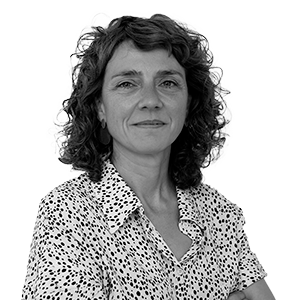Pol Forn-Díaz: "I am one of the few researchers in the world working with Nobel Prize-winning quantum chips."
Researcher at the Institute of High Energy Physics and co-founder of Qilimanjaro Quantum Tech


The first time Pol Forn-Díaz heard about quantum information was during a summer course in the Aragonese Pyrenees. He hadn't long finished his degree and was completely fascinated when he heard about it. Antonio Acín, a theoretical physicist at the Institute of Photonic Sciences (ICFO), talking about quantum information. Shortly after, while starting his doctorate in the Netherlands, he met research groups that were applying superconductivity, another topic that interested him, to quantum information. It was a revelation that pushed him to take a leap of faith and launch into research in this entirely new field.
Two decades later, this physicist leads the quantum computing technology group at the Institute of High Energy Physics (IFAE), dedicated to developing superconducting quantum circuits, one of the most promising technologies for building these technologies. He is the co-founder and CTO of Qilimanjaro Quantum Tech, a pioneering company in Europe working to build commercial quantum computers.
Forn-Díaz's research group is the only one in Spain and one of the few in the world that conducts research based on in physics, awarded the Nobel Prize for developing quantum chips for quantum computers.
What does your research have to do with the Nobel Prize in Physics?
— This year, the award was given for demonstrating that electrical circuits also obey the laws of quantum physics. Quantum theory was made to describe the microscopic world, but the three award-winning physicists demonstrated that quantum physics also existed in electrical circuits and that the effects could be observed because they manifest themselves on a macroscopic scale. They combined the tunneling effect—which is what makes it possible for an electric current to pass through the gap if you take two superconductors and bring them very close together, but leaving a gap—with electrical circuits to demonstrate that the physics describing the circuit was quantum.
The embryo of quantum bits, fundamental to building quantum computers.
— That's right, the experiments they conducted in the 1980s were a primitive version. Once you have superconducting circuits, you can figure out how to use them, control them, manipulate them, and read them efficiently. And when you achieve that, you have quantum bits. And that's what we do: we design, manufacture, and measure superconducting quantum circuits. We are the only research group in Spain and one of the few in the world conducting experiments with these circuits. Truly, we are a special case.
What types of experiments?
— At IFAE, we conduct basic research in the physics of superconducting quantum circuits. We have recently launched a new line of research in which we are exploring how to use quantum bits to detect magnetic fields, vibrations, radiation, and even the cosmic microwave background radiation from the Big Bang. In fact, I am involved in a European project to detect dark matter, which we don't even know what it's made of.
How do you make this technology?
— We're starting to mature enough to develop quantum bits that are 100% made in Catalonia and that work. We use the clean rooms [a laboratory from which all airborne dust particles have been removed] on the Bellaterra campus, the ones at the Barcelona Institute of Microelectronics (IMB-CCNM), the CSIC, and the Catalan Institute of Nanoscience and Nanotechnology (ICN2). ICFO also has one, and at IFAE, we have the machine where we evaporate the metal to deposit it on the circuits with absolute precision, nanometer by nanometer, until we obtain the desired thickness.
What metal is used?
— Aluminum, the same material the Nobel Prize-winning researchers used to conduct their experiments. And Google and IBM's quantum computers are also made of that metal. We use cryogenic cooling to keep the circuits at low temperatures, and we use low-power signals in the microwave range to control them.
You conducted research at two prestigious institutions: the California Institute of Technology (Caltech) and the Institute for Quantum Computing at the University of Waterloo in Canada. Why did you return to Catalonia?
— When I began my PhD in 2005, it had been just five years since the first experiment with a superconducting circuit had been performed, demonstrating quantum state control. Research was underway at the time to determine whether, with precise control of this circuit, it could be used as quantum bits in a quantum computer. However, it was unknown what materials to use, and quantum superconducting circuits emerged as possible candidates in the late 1990s. When I finished my PhD, the environment was still very academic. But everything changed when, in 2011, the American company IBM decided to develop a quantum computer with these circuits. This led to the development of the quantum industry for making superconductors. And in 2017, I decided to return to Catalonia to build the first quantum computing laboratory in Spain, and at that time in the Mediterranean.
He set it up at the Barcelona Supercomputing Center (BSC-CNS) in Barcelona.
— It was the center that began to show interest in quantum computing. I was working to develop the first quantum bit, which we measured at ICN2. I also began collaborating with José Ignacio Latorre and Artur Garcia, two experts in quantum algorithms, and together we founded a spin-off Qiimanjaro, which now employs 70 people, is from the BSC, the University of Barcelona, and the IFAE. On the same day in April 2019 that the company launched, he joined the IFAE as a researcher.
Do you know the Nobel Prize-winning researchers?
— I've visited all three of their laboratories and have colleagues who have worked directly there. Although the Nobel Prize has transformed them into public figures, they are researchers just like us.
